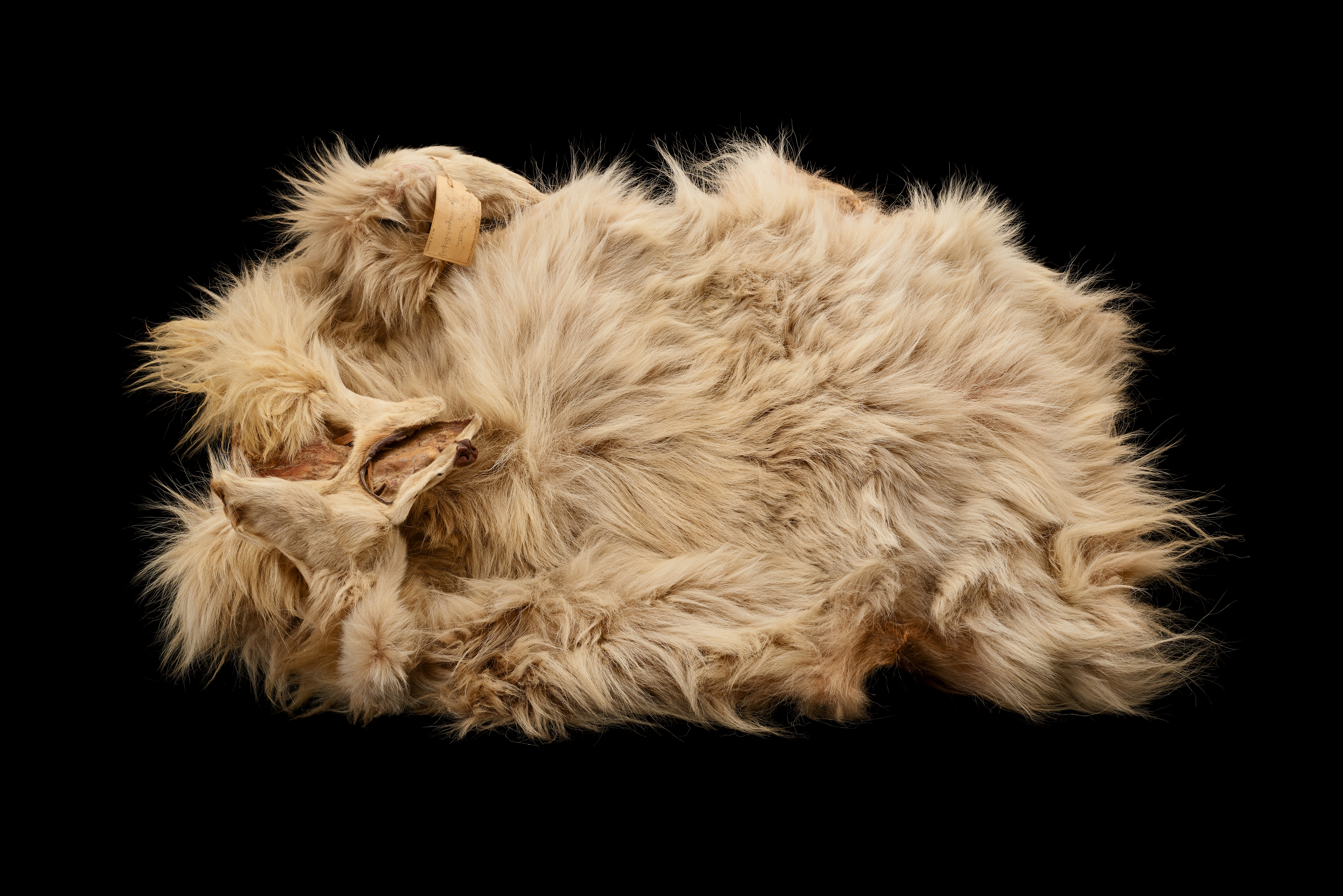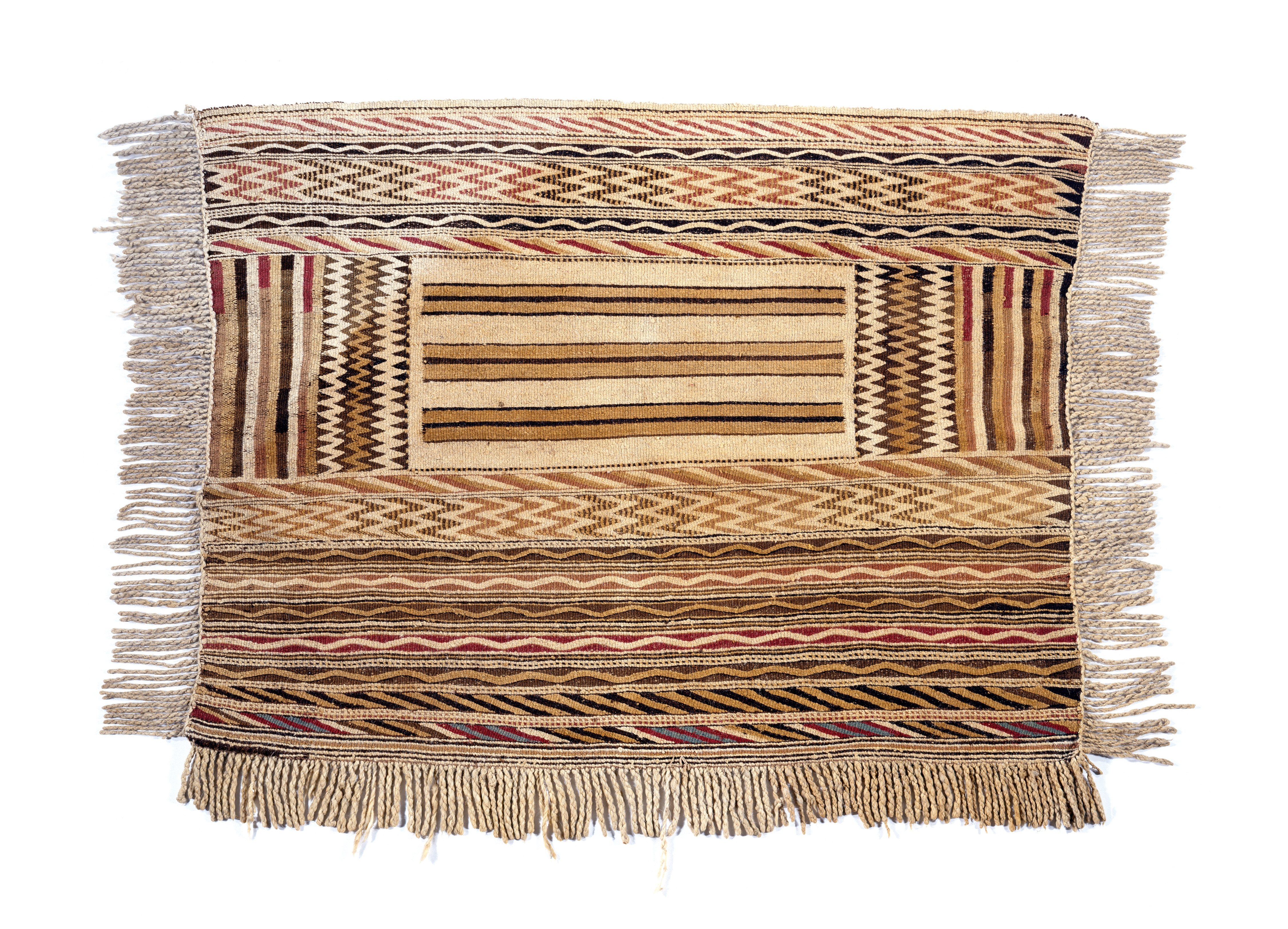Dogs are not called our best friends for no reason. Throughout human history, our lives have been intertwined with those of our canine companions – they protect us, work for us, and just keep us company. By combining modern genomics techniques with the knowledge of Indigenous communities, science just gained a new insight into a little-known breed that had been prized by Native American people for thousands of years, and it starts with the 160-year-old coat of dog called Mutton.
Woolly dogs were bred and cared for by the Indigenous Coast Salish people of the Pacific Northwest for thousands of years. As the reconstruction above shows, our best guess is that they looked a lot like modern spitz breeds, but these were some seriously floofy doggos. So floofy, in fact, that they could be sheared like sheep so that their thick undercoats could be woven into blankets and other textile items.
The dogs enjoyed very high status in Coast Salish society with important spiritual significance, as evidenced by the emblems of woolly dogs that can be found in art and artifacts from this community. Their breeding and healthcare were managed very carefully, and they were considered cherished family members.
But by the mid-19th century, when Mutton was being looked after by naturalist and ethnographer George Gibbs, the dog wool-weaving tradition was in decline. After Mutton’s death in 1859, Gibbs donated his complete pelt to the Smithsonian Institution, where it remained a little-known secret until its rediscovery over a century later.

Mutton’s pelt, the only complete woolly dog pelt known to exist, now resides in the Smithsonian’s collection.
Image credit: Brittany M. Hance, Smithsonian
“When I saw Mutton in person for the first time, I was just overcome with excitement,” said evolutionary molecular biologist Audrey Lin, who got her first glimpse of the one-of-a-kind fleece in 2021, in a statement. “I had heard from some other people that he was a bit scraggly, but I thought he was gorgeous.”
Lin and colleagues set out to fill a gap in the scientific record: almost no genetic analysis existed on woolly dogs, which appeared to have gone extinct around the turn of the 20th century. As well as bringing together experts from different scientific disciplines, the researchers were keen to draw on the expertise and generational knowledge of the Coast Salish people.
“We were very excited to participate in a study that embraces the most sophisticated Western science with the most established Traditional Knowledge,” said Michael Pavel, an Elder from the Skokomish/Twana Coast Salish community in Washington state. “It was incredibly rewarding to contribute to this effort to embrace and celebrate our understanding of the woolly dog.”
To add to the insights from Pavel’s community and other Coast Salish people from British Columbia and Washington, the team sequenced the woolly dog genome to compare it with other ancient and modern dog breeds. Isotope analysis of Mutton’s coat revealed some insights into his diet, and natural history illustrator Karen Carr produced the life-like reconstructions.
To try and figure out what made woolly dogs so woolly, more than 11,000 genes were analyzed, and 28 of these were found to be linked to hair growth and follicle regeneration. Some were similar to genes that have been identified in woolly mammoths, and one is linked to curly fur in other dogs.
But the question of why the woolly dogs went extinct is harder to answer from genetics alone. It’s been supposed that the arrival of machine-made blankets to the region may have led to the demise of the traditional weaving art and the subsequent decline of the breed, but this does not tally with the recollections of the Coast Salish people themselves.
Rather, it’s likely that Coast Salish communities were either forbidden from keeping the dogs by colonial settlers, or the disease, genocide, and displacement wrought by the settlers made it too difficult for the Indigenous people to keep up this tradition.
“It was thousands of years of very careful maintenance lost within a couple of generations,” said Lin.

This example of a traditional Coast Salish blanket is woven from a mixture of woolly dog wool (vertical strands) and goat wool.
Image credit: Smithsonian
But the memory of dogs like Mutton still lives on for the Coast Salish people, and Pavel explained why research like this is so welcome.
“All of our communities held a certain aspect of knowledge about the woolly dog. But when woven together, as a result of participating in this study, we now have a much more complete understanding.”
The study is published in the journal Science.
Source Link: What Caused The Demise Of Dogs With Fur So Thick, Native Americans Wove It Into Blankets?